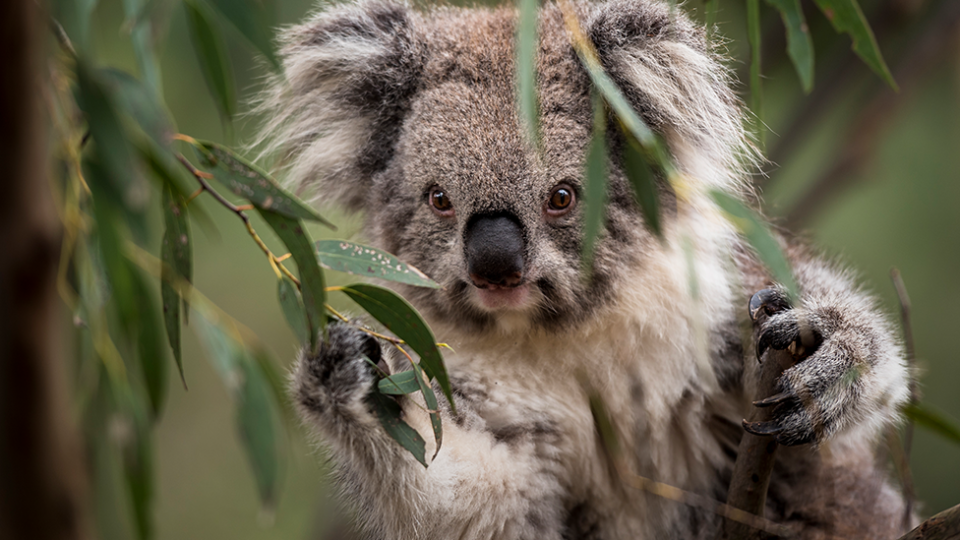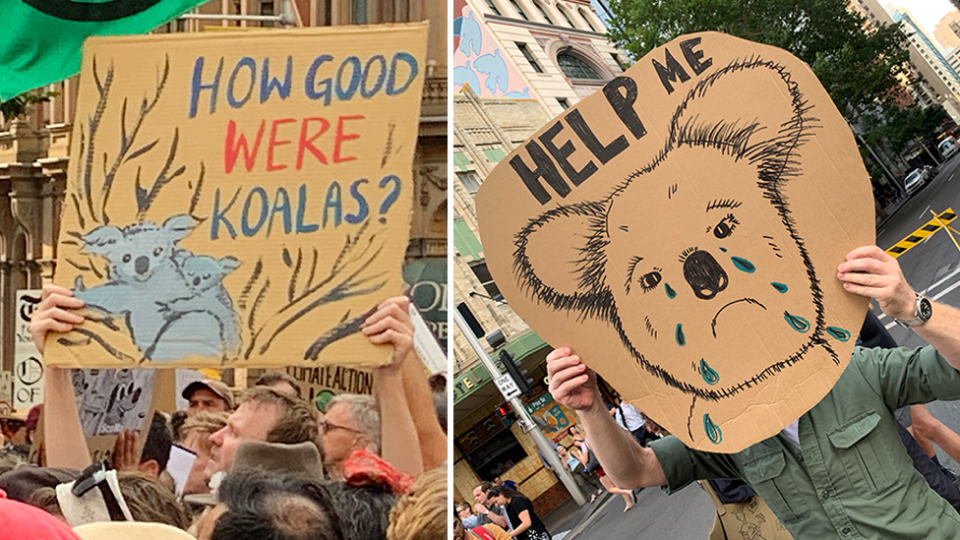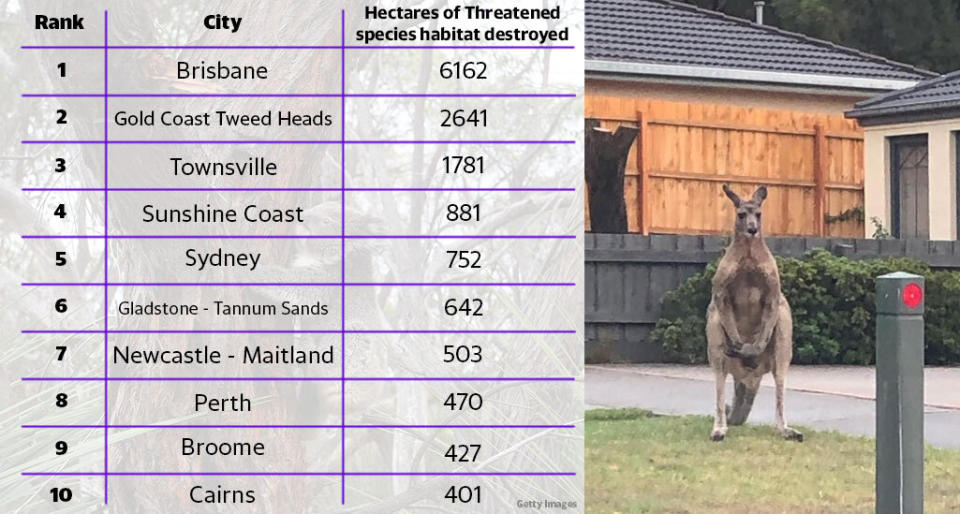The surprising list of animals hiding in our cities which face extinction
Animal and plant species are facing extinction in some of Australia’s biggest cities as building projects compete for habitat.
Brisbane tops the list of the “10 worst cities for habitat destruction”, with three other Queensland regions; Gold Coast, Townsville and Sunshine Coast close behind, according to new data released on Wednesday by the Australian Conservation Foundation.

Sydney was found to have the most threatened species, harbouring 80 different plants and animals which are vulnerable to extinction, followed by Melbourne at number two.
The report focused on 99 regions with populations of more than 10,000 people, and while these areas equate to just 0.22 per cent of Australia’s total land mass, they are home to 25 per cent of our nationally listed threatened animals, and a staggering 46 per cent of our vulnerable plant species.

Australia is listed as one of the world’s 17 megadiverse countries due to the large and varied species living on the continent, many of them endemic, however it also has the worst mammal extinction rate on earth.
By highlighting the challenges our wildlife is facing, the report’s authors hope to influence development policy and urban design.
Wildlife in conflict with development
High on the list of many conservationists’ concern is the koala, which is listed as vulnerable to extinction in Queensland, NSW and the ACT, where its survival is threatened by habitat loss from urban development, and compounded by dog attacks, car strikes, drought and bushfire.
A NSW parliamentary inquiry into koalas delivered its findings in June, warning that the animal could become extinct in the state by 2050 if urgent action wasn’t taken.
Populations of the red goshawk have dwindled to an estimated 300 breeding pairs, despite its range reaching from the Kimberly to northern NSW.

The red coloured raptor has lost 15,000 hectares of habitat, under Australia’s federal environmental protection laws, which have been widely criticised amid an independent review by Dr Graeme Samuel, currently underway.
Grey-headed flying-fox have wings spans up to a metre-wide, and can travel up to 50km in a night, but with dwindling supplies of food due to climate change and habitat loss, they are vulnerable to extinction.
Other species highlighted in the report include the regent honeyeater of which there are only an estimated 250 individuals left and the once prevalent Australasian bittern which has lost its wetland habitat to development.
‘Be part of the solution’: Learning to share our cities with wildlife
Reframing the way we think about wildlife in our cities could be key to safeguarding them from extinction, but also improving their liability.
Professor Sarah Bekessy from RMIT’s Centre for Urban Research has been working to redesign urban areas so that the spaces can be shared with native plants and animals.

“At the moment we do development in a way that sees (nature) as a problem,” she told Yahoo News Australia.
“Biodiversity is actually seen as a “constraint layer” rather than an opportunity we should maximise in the planning process.
“The evidence is now absolutely compelling that connection to nature is really critical for our health and for our mental wellbeing, for our physical wellbeing and for our immune response.
“These are the sorts of things we’re probably quite alert to [with lockdown] during COVID-19.

“I think COVID has taught us that people with nature in and around their lives have been far better off than people without it.”
'Blood on hands': Kangaroo slaughter on hold after joeys spotted in mob
'Bloody frustrated': Developer says government left him no option but to shoot 40 kangaroos
Coronavirus: Concern after hundreds of face masks wash up on beach
While the current approach to planning is often to bulldoze an area, and offset the destruction with a green space elsewhere, Professor Bekessy says this is not a good solution for people living in urban areas.
She sees the integration of nature into cities as “critical” in creating liveable cities, including treating storm water with plant-life and combatting the effect of rising temperatures due to climate change, but believes policy and regulations are lagging behind.

“Biodiversity sensitive urban design is something we’ve been working with alongside developers,” she said.
“We just don’t think let’s try and keep a few trees, we actually try and bring back stuff that used to be on a site.
“There are lots of species that have only recently disappeared from our suburbs that we could easily bring back with some beautiful, careful design.”
“People can plant plants on their balconies, their backyards, frontwards, nature strips, even on rooftop gardens, and every citizen can be part of the solution.
“Regenerative design in cities is kind of a really positive story that we all probably need.”
Do you have a story tip? Email: newsroomau@yahoonews.com.
You can also follow us on Facebook, Instagram and Twitter and download the Yahoo News app from the App Store or Google Play.




